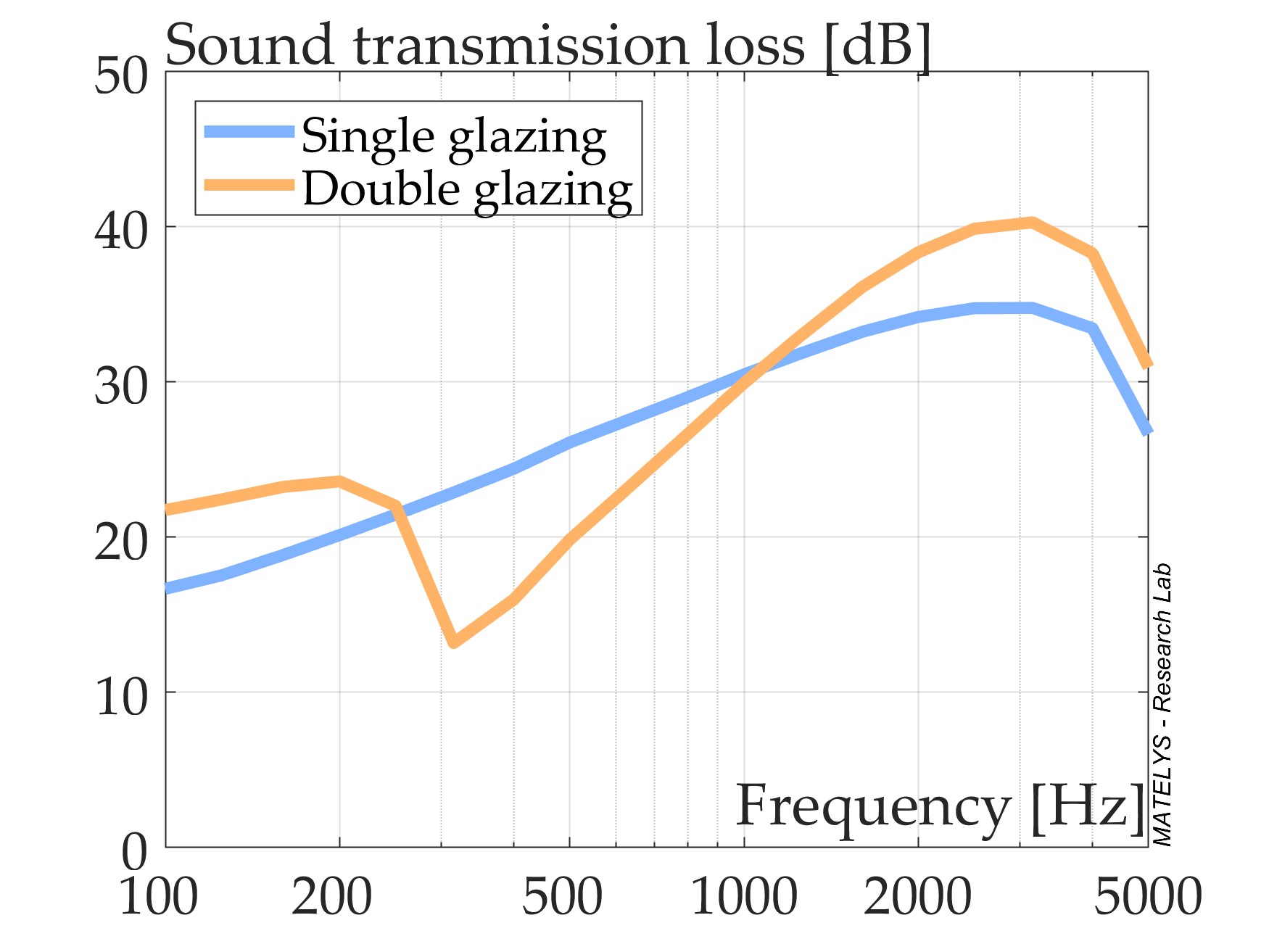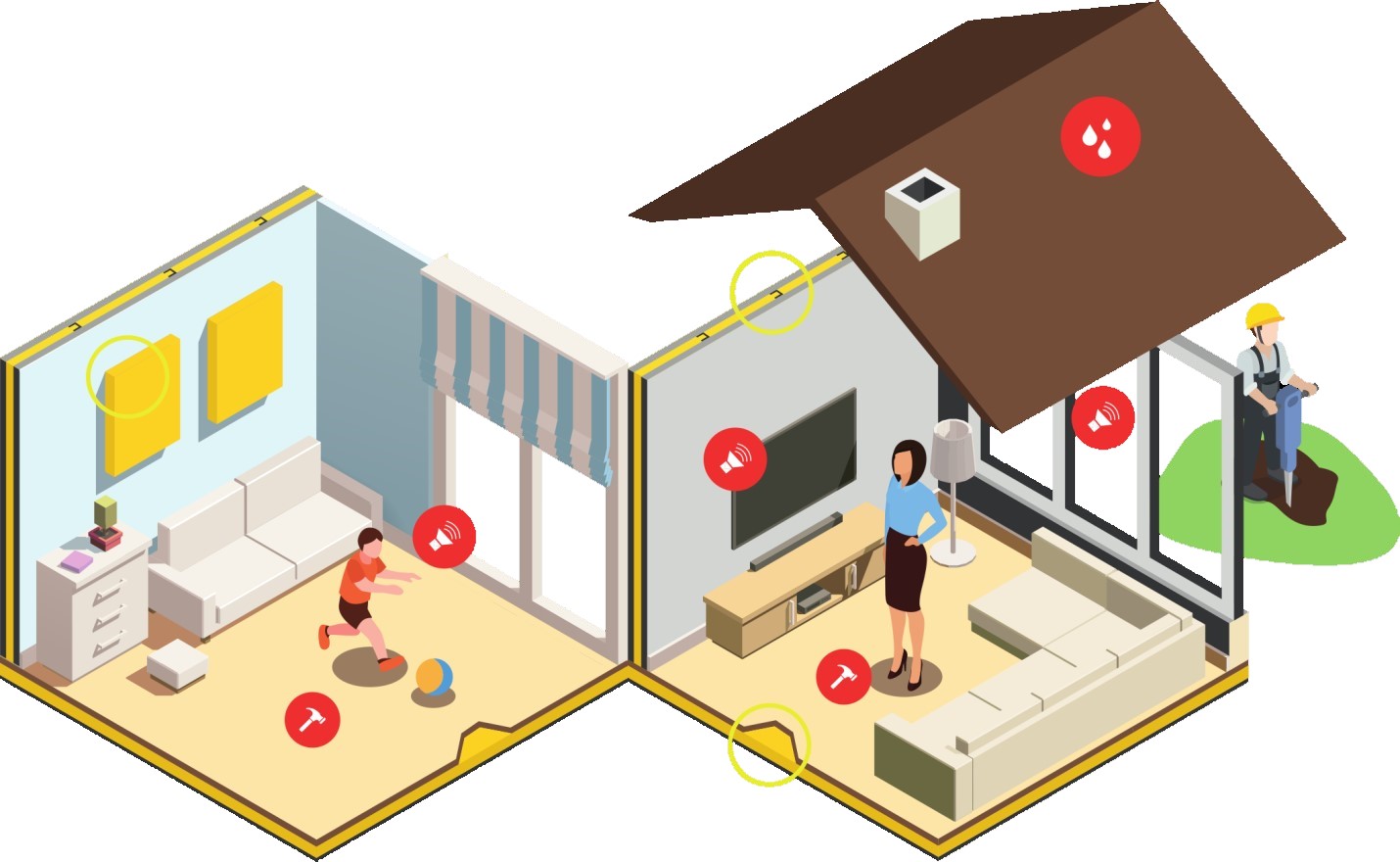Digital Debunking – The Noisy Neighbor Dilemma
Apartment living has many advantages. Many times, you benefit from the convenience of living closer to the city center, have access to shared amenities, and enjoy more affordable living expenses compared to single-family homes. But when you share a building with other tenants, certain issues can make or break your experience. Traffic, loud noise from neighbors, thin walls and floors, and worse, clogging problems.
Unwanted noise in multi-tenant buildings is a big issue, but mechanical engineers have worked out new design approaches that make mitigating these problems easier. By using a simulation-driven approach to design, engineers can quickly evaluate the impact of acoustics dampening strategies on building design before any physical testing needs to be performed. The best acoustic strategy is not always intuitive, meaning simply adding more insulation material doesn’t always yield better results. In fact, overdesigning can sometimes add mass and building cost without actually solving the underlying issue. Simulation software allows designers to precisely tune sound frequencies, select and compare materials, and optimize the structure of a sound dampening solution to ensure maximum comfort for building residents.
We wanted to find out exactly what kind of design and materials contribute to improving the acoustics of apartments and other multi-tenant buildings. To do so, AlphaCell simulation technology assisted with the design and debunking of a popular movie scene from Ace Ventura: Pet Detective.
Ace Ventura: Could a double-pane window really mute a scream?
Jim Carrey’s character in the movie posits that a soundproof sliding glass door might explain why neighbors were unable to hear a victim’s calls for help. In this clip, Ventura is a proving a point to a group of detectives that, because the sliding glass door is made of double-pane glass, it would have been impossible for the neighbor to have heard a scream from the balcony if the door was shut. Besides the possible sound path from the victim’s balcony to the neighboring premises, we wanted to investigate how much better double-pane glass dampens sound compared to single-pane glass and see if the movie exaggerates the soundproofing performance for dramatic effect. Could this double-pane glass really have muted the sound of someone yelling from the balcony?
It can be assumed that the complete silencing of Ace Ventura’s voice when the glass door was shut was exaggerated for entertainment purposes. However, it is also likely that a large portion of the noise was muted or softened due to the design of the sliding glass door.
Based on averages that have been recorded of human screams, we’re estimating that Ace Ventura’s scream was approximately 200 Hertz (Hz). For this investigation, the frequency range that was focused on was 200 Hz to 1000 Hz, a typical range of frequency that can be registered by the human ear.
In the image below created with AlphaCell, a simulation technology developed by Matelys, we can see that the higher the sound frequency, the better the sound insulation. After conducting some research on the effectiveness of double-pane glass, we know that it prevents a large portion of sound vibrations from passing through the glass as opposed to single-pane. Even though performance improves with the double-pane, the improvement only occurs in a certain range of frequencies, approximately below 300 Hz and above 500 Hz.

Looking at the sharp dip around the 300 Hz mark, we asked the AlphaCell team why it is that sound insulation occurs at a more successful rate at lower frequencies. We learned that transitioning from a single-pane configuration to double-pane with an intermediate air gap changes the way the system behaves. For the latter, the system behaves as a mass-spring-mass system where the two masses are the panes, and the spring is the air of the intermediate layer. For this system, at low frequencies where the sound wavelength is much larger than the total system thickness, the sound 'views' the system as a whole and its behavior is governed by the total mass: the larger the mass, the higher the sound insulation.
Additionally, a big factor that can impact the quality of sound insulation in a door is the air gap thickness between two panes. In the above animation, you can see that as the thickness of the air gap is adjusted, sound transmission loss can vary significantly at a given frequency. This demonstrates the principle that adding more material won’t necessarily increase the performance of an acoustic strategy. However, early access to these types of insights allow engineers to perfect their design strategy and optimize it according to virtual model feedback.
Even though the level of sound dampening of the sliding glass door was amplified for dramatic effect, we now know that with the use of advanced simulation, building designers can much more easily explore vibro-acoustic responses of building structures, helping out renters with unwanted noise occurring inside and outside the apartment.
In conclusion, we could argue that Ventura chose his particular pitch to demonstrate the effectiveness of the “double-pane, soundproof” glass to win the case. Had he chosen a higher pitch, his demonstration may have been less successful because of the nature of sound transmission loss vs. frequency.
Out of curiosity, we simulated what Ace Ventura’s scream may have sounded like (before the director’s cut…) behind a single-pane glass door:
versus the double-pane glass door:
Other uses of acoustic and thermal insulation in architecture
As double-pane glass is just one example of acoustic insulation in architecture, civil and mechanical engineers have discovered many other ways to make building tenants a lot happier through the application of acoustic and thermal insulation. Soundproofing has been achieved through approaches such as decoupling drywall from the wall framing, using floor underlays, which are usually made out of rubber, cork, rubber cork, felt or fiberglass (similar to a carpet pad installed beneath the final floor material), as well as the common method of installing insulation between wood or metal studs behind drywall.
Especially in rental buildings where the structures are sensitive to noise disturbances, engineers have successfully been able to diminish rainfall noise on windows and roof tops by applying simulation to the overall process. By combining the thermal and acoustic requirements of facades, building design has benefitted from both traditional and new, innovative approaches.

The use of insulation has advanced with technology and simulation, and AlphaCell technology has the capability to model and simulate each of the above applications. As a part of the Altair Partner Alliance, AlphaCell is a complete solution for simulating the vibro-acoustic response of multi-layer trims under various excitations (airborne, structure borne, turbulent boundary layer). AlphaCell also enables the computation of steady state thermal properties of multi-layer arrangement, as well as accounting for thermal bridges.
AlphaCell’s intuitive user interface makes it easy to complete quick model setups, make fast computations, and validate noise, vibration, and harshness (NVH) evaluations against measured data. Users can understand acoustic performance, select simulations to perform, and optimize models all within a single platform with built-in unique features and full scripting capabilities. Altair users can access AlphaCell through the Altair Partner Alliance.
In conclusion, how effective is double-plane glass?
It might not be possible to make your apartment completely soundproof, but with simulation-driven NVH software, building designers and architects have a greater ability to improve the acoustic performance of their building designs now and in the future, and combining those with the increased thermal performance required by energy savings and low ecological footprint approaches. Applying simulation early to the design process makes it easier for architectural teams to validate their concepts quicker and with fewer design iterations. And unlike traditional approaches, simulation enables teams to easily automate their workflows for processes like vibro-acoustics, thermal analysis, and more to explore opportunities for optimization. Instead of having to deal with the costs and hassles of physical testing, simulation tools can assist with modeling how certain materials and design plans will affect the acoustics of any building, from apartments to commercial structures. Altair and AlphaCell offer an integrated solution for measuring acoustic responses, testing insulation materials, and evaluating the functionality of structures.
The results from AlphaCell show that Ventura’s yell would not have been totally muted by the sliding door but would still go a long way to dampen the sound depending on the thickness of the glass and distance between the panes. We can call this scene from Ace Ventura: Pet Detective debunked, but we did show how useful NVH simulation can be for improving building acoustic performance.
Register today for the upcoming webinar on April 6, 2021 featuring AlphaCell.
To learn more about how Altair’s simulation technology can help with the creation of innovative architectural structures, click here.





